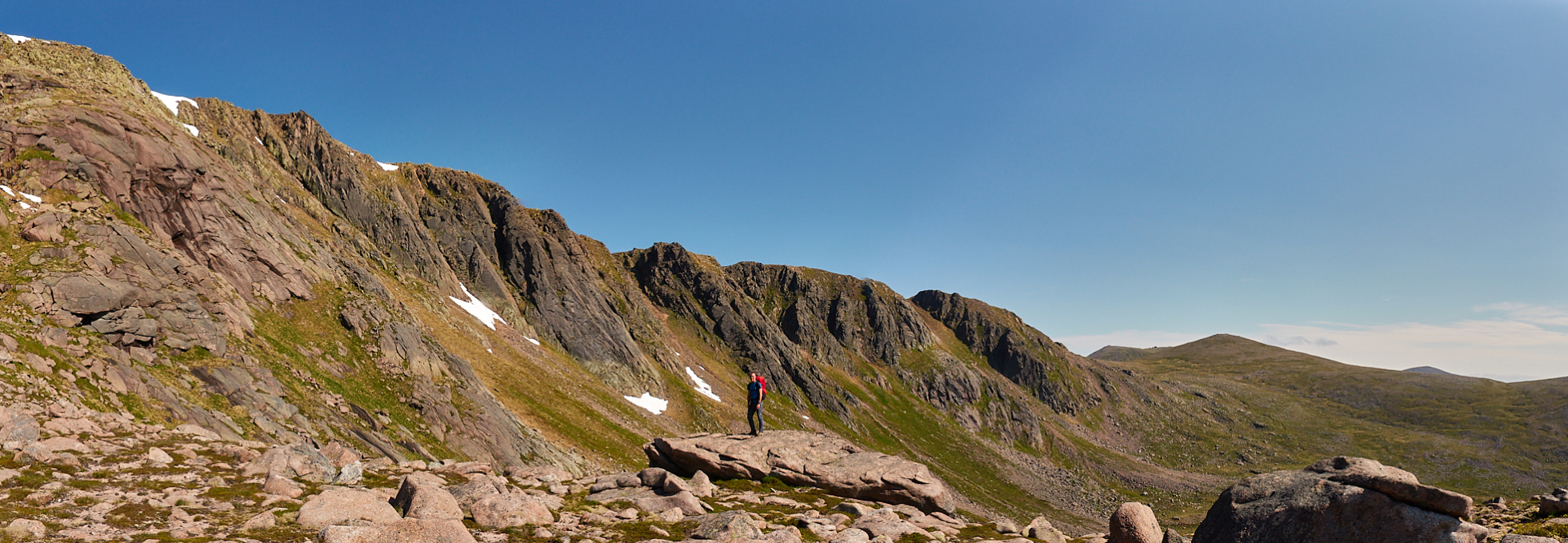The start of May usually coincides with mine and Debs’ annual pilgrimage to the wild coires of Beinn a’Bhuird. This majestic mountain is one of Scotland’s most remote and along with it’s neighbour, Ben Avon, constitutes an eastern outlier of the central Cairngorm massif nearly 16km from the trailhead near Braemar. In typical Cairngorm style the mountain is riven with impressive coire systems which cut deeply into a tundra-like central plateau and harbour hidden buttresses and gullies amongst their complex folds of red and brown granite.
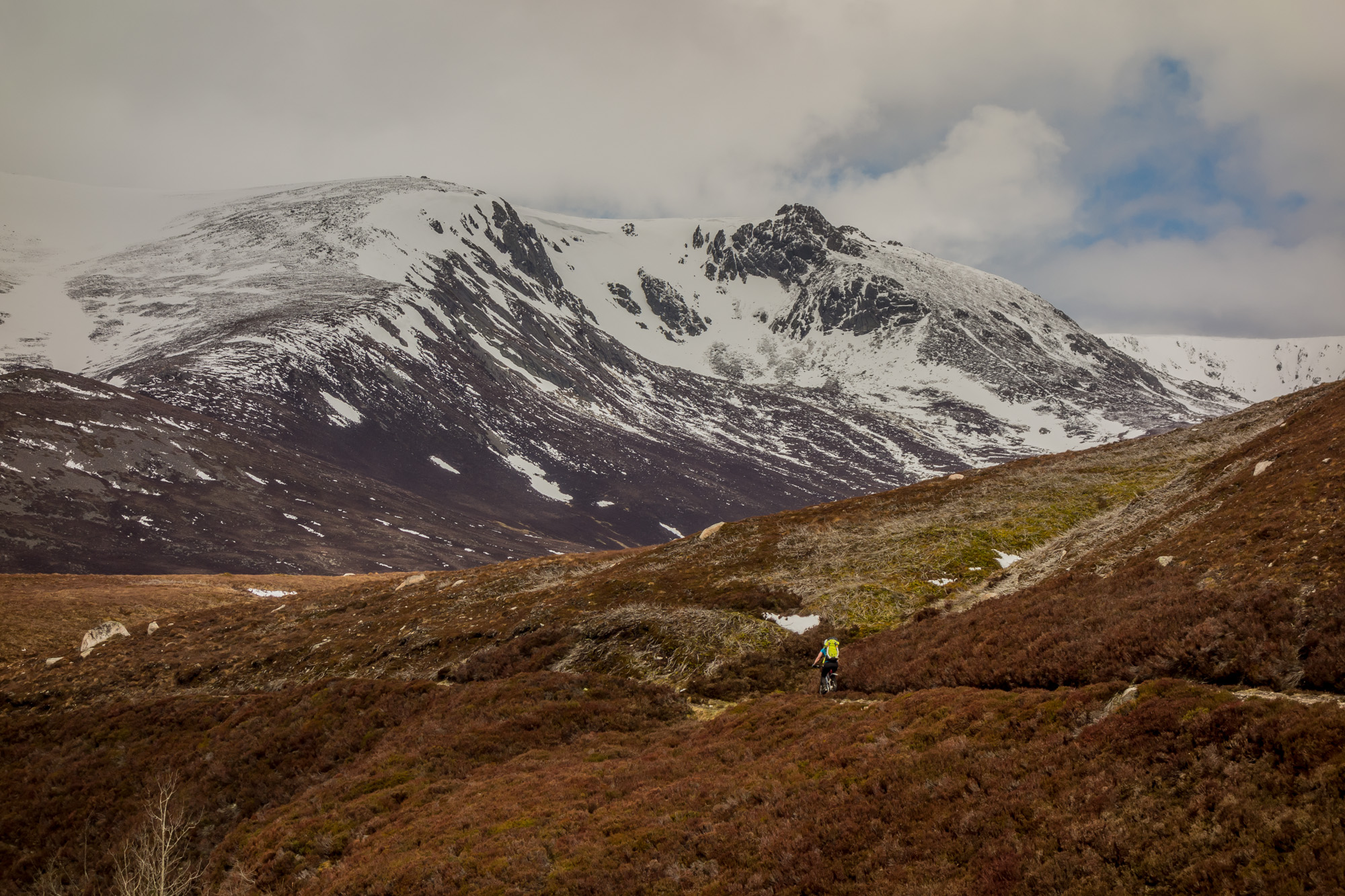
The jewel in the crown has to be the spectacular Garbh Coire, home to one of the Cairngorms’ best pieces of rock architecture, Mitre Ridge, and its many classic summer and winter climbs. However, the east-facing coires Ciche, Lochain and Clach still offer plenty to the climber and we had set our sights on an ascent of a route on Dividing Buttress which separates the latter two.
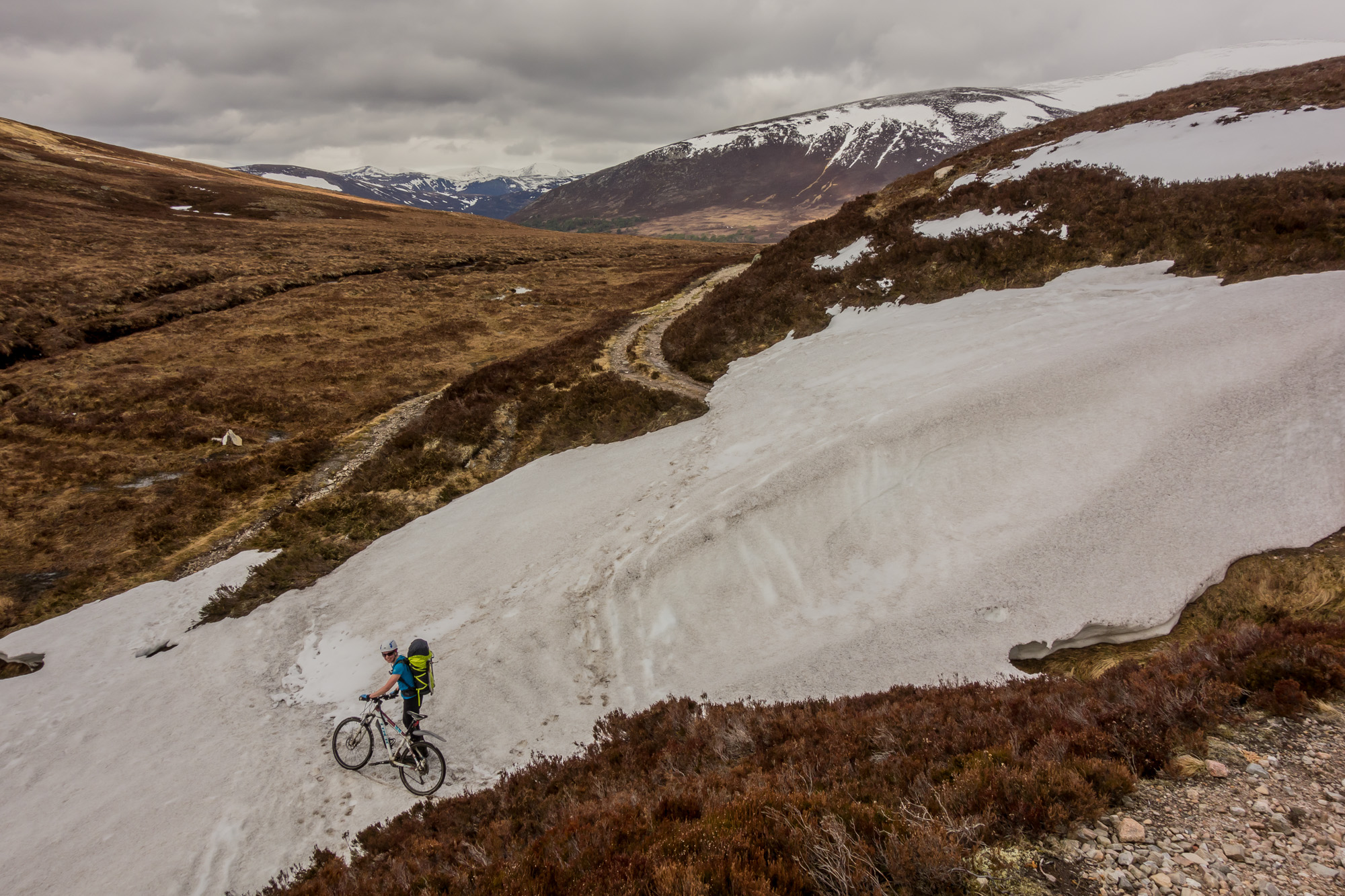
Often a fickle time of year for weather in the high Cairngorms, one can expect all four seasons in a day, with conditions in the coires a bit of mystery until they eventually come into view on the long cycle in. We certainly had the full gambit of weather on the approach up Gleann an t-Slugain – cycling in tee shirts while the sun shone one minute and layering up the next when squalls of hail and snow blew through.
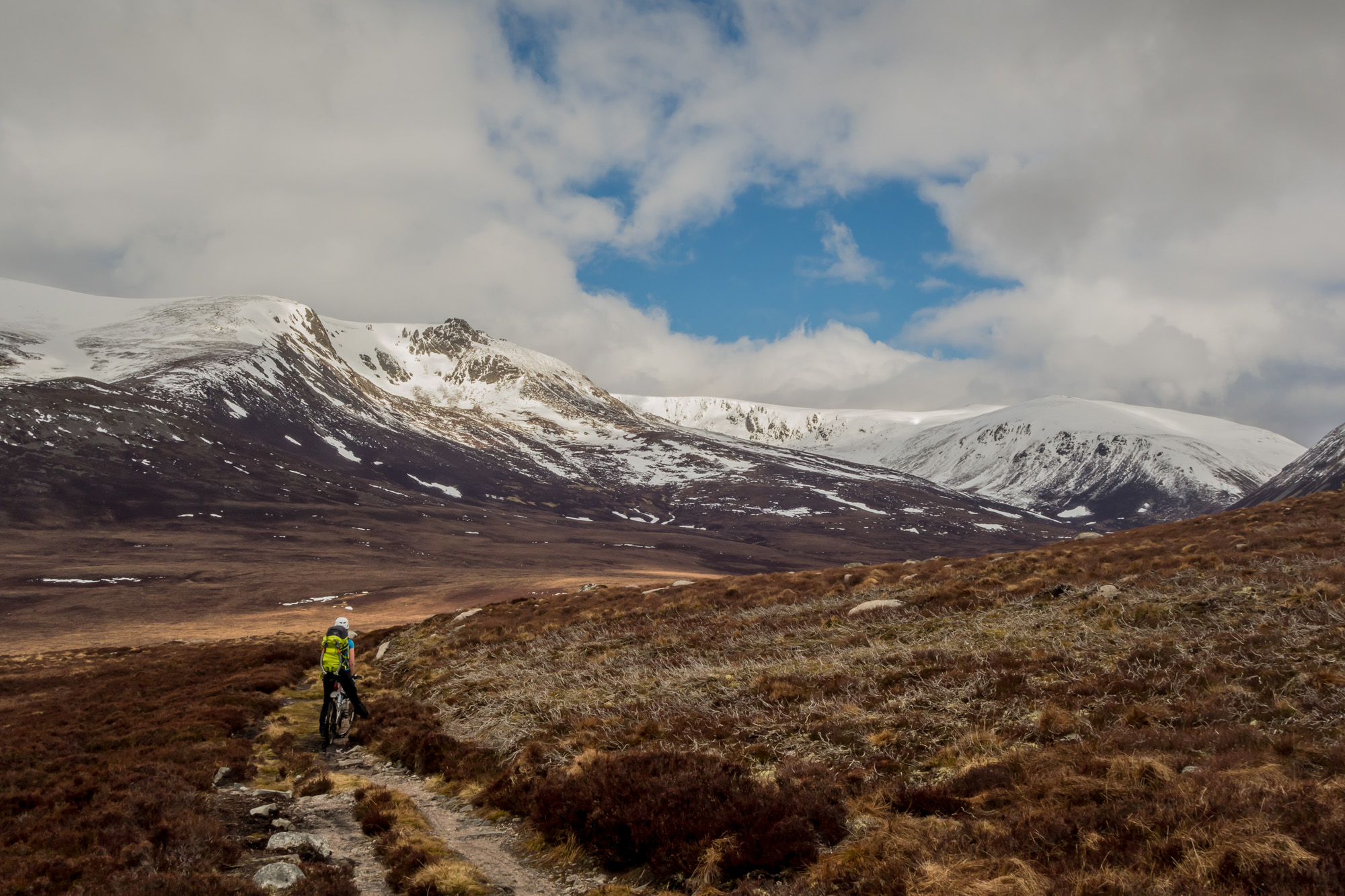
For the first 8km the cycling is easy going with mostly gentle inclines and the odd rocky patch to deal with. After that it’s very easy to question whether continuing on bikes is worth it, as for about 1km the path becomes very steep and rough. Persevere though and you are rewarded with nearly 4km of well-made gravelly path all the way to the start of the Glas Allt Mor, with only a few spoke-bothering drainage ditches to jump or crash in to.
The views from here told us all we needed to know about the climbing conditions – it was very much still winter! However, knowing that the snow was likely superficial and the ground beneath unfrozen after weeks of warm weather, technical climbing was obviously out of the question. Nonetheless, we were full of excitement at the prospect of some wintery scrambling and after stashing the bikes off the path we hiked west following the outflow from the Dubh Lochan.
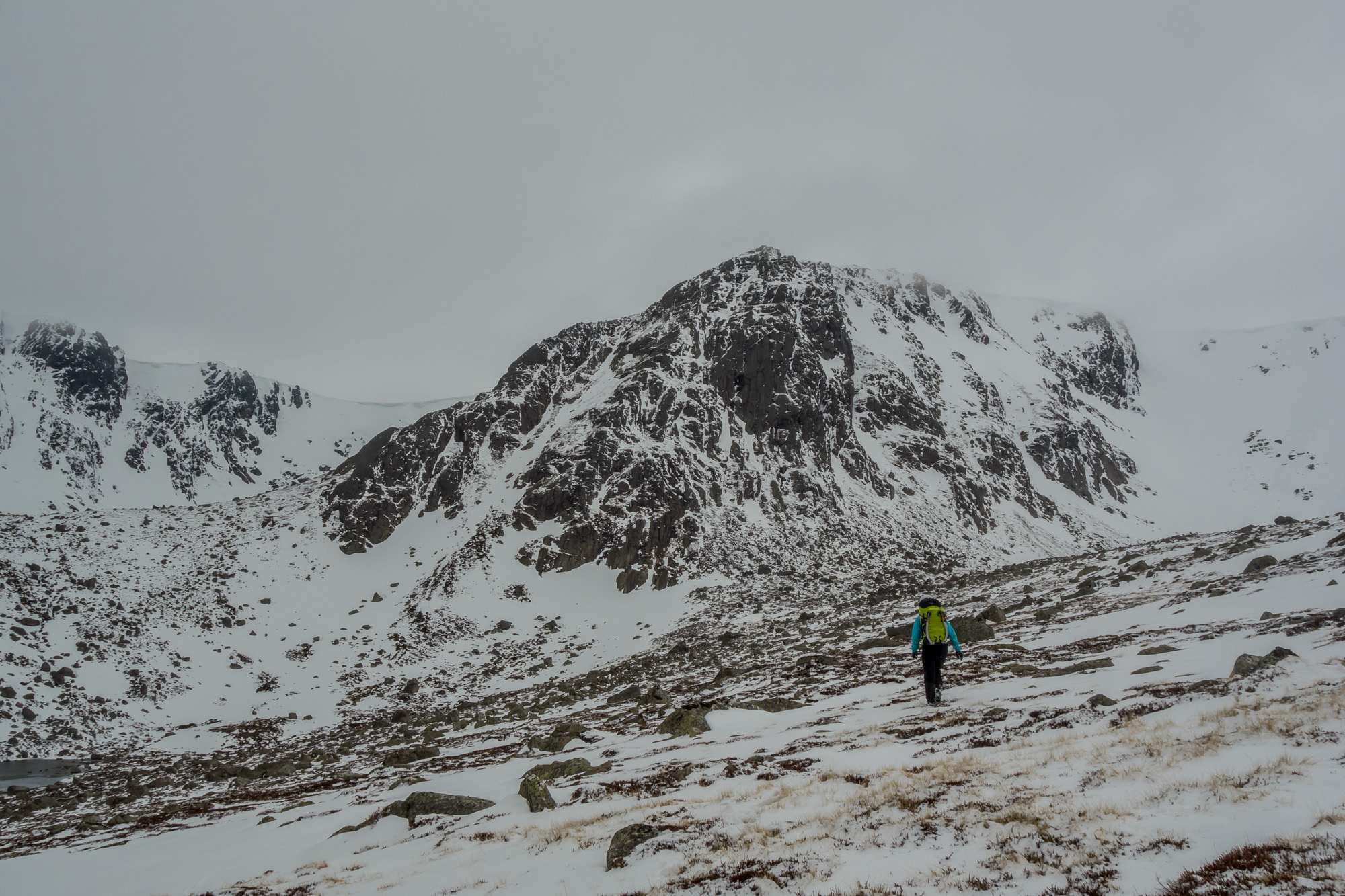
Crossing the burn was entertaining and we carefully traversed snow that had been hollowed out by the flow, in some places leaving caves from which bulbous icicles dripped. Ptarmigans looked on in bewilderment as we ploughed across the moorland and headed up towards the base of the route.


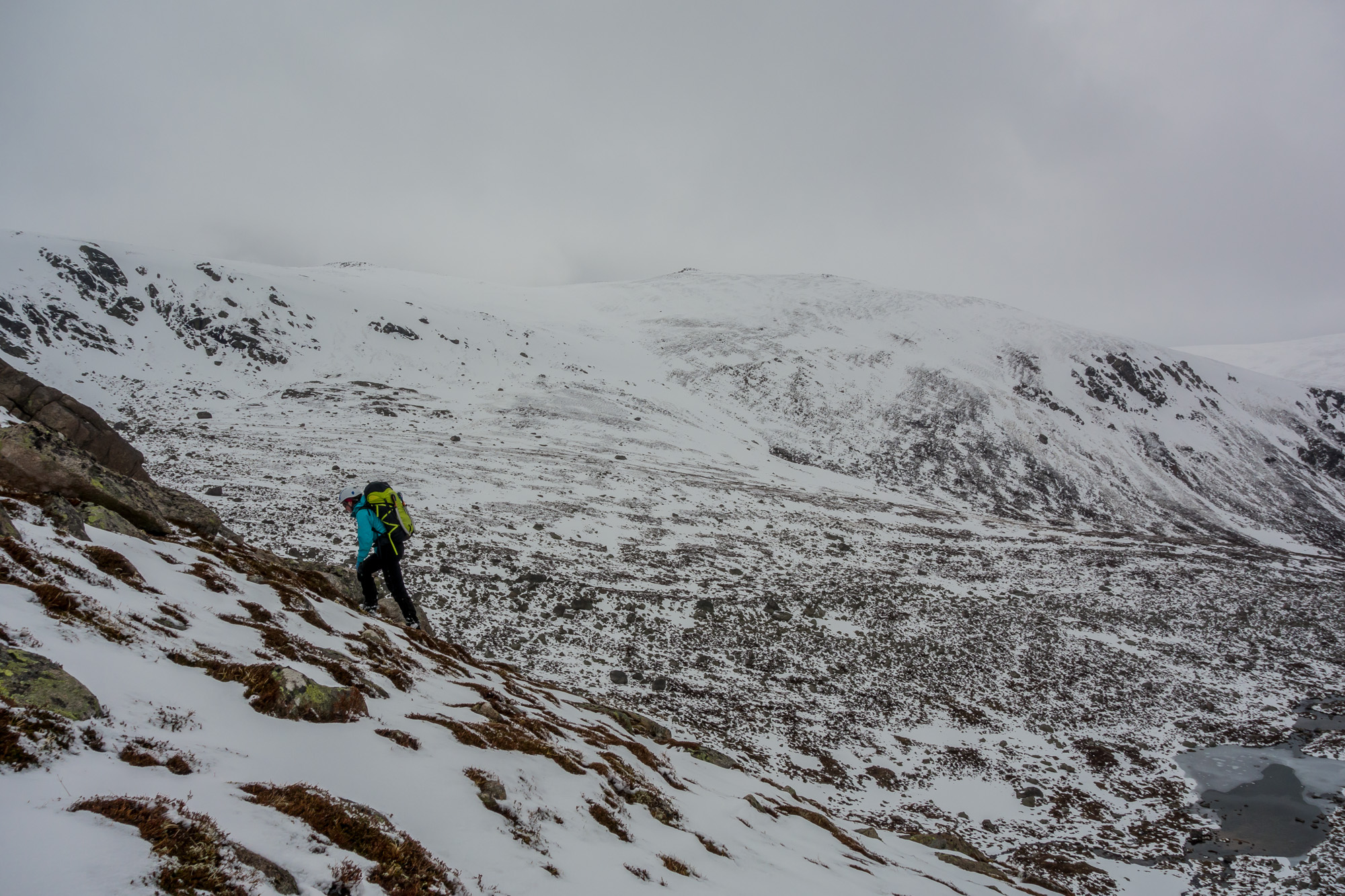
Slab and Arete follows the left-bounding ridge of Dividing Buttress and in summer goes at the very amenable grade of Difficult. Unsurprisingly the line takes a smooth concave slab and continues via a tower to a narrow arête which is followed to easy ground and thence the plateau. Given the easy nature of the climbing we decided to move together up the route. This technique involves climbing simultaneously and carrying coils of rope around the body, while the length of rope between the climbers is dictated by the nature of the terrain and the frequency of gear placements. While sacrificing the security of belay anchors it allows for significant gains in speed, which if you’re racing incoming weather on a long route may be more preferable.

Climbing in crampons with one axe for balance and the odd hook, we made steady progress up the snow-filled grooves bounding the left edge of the slabs and eventually arrived at the tower. The summer route takes a chimney to the left of the crest but seeing a more aesthetic and wintery-looking line heading right we followed that instead. A steep groove and a delicate step right was the crux of the route and deposited us in a short gully leading up to the arête behind the tower. By now we were acutely aware of the steady increase in the wind speed and a few airy steps later found us heading up easy ground and in to the maelstrom on the plateau.
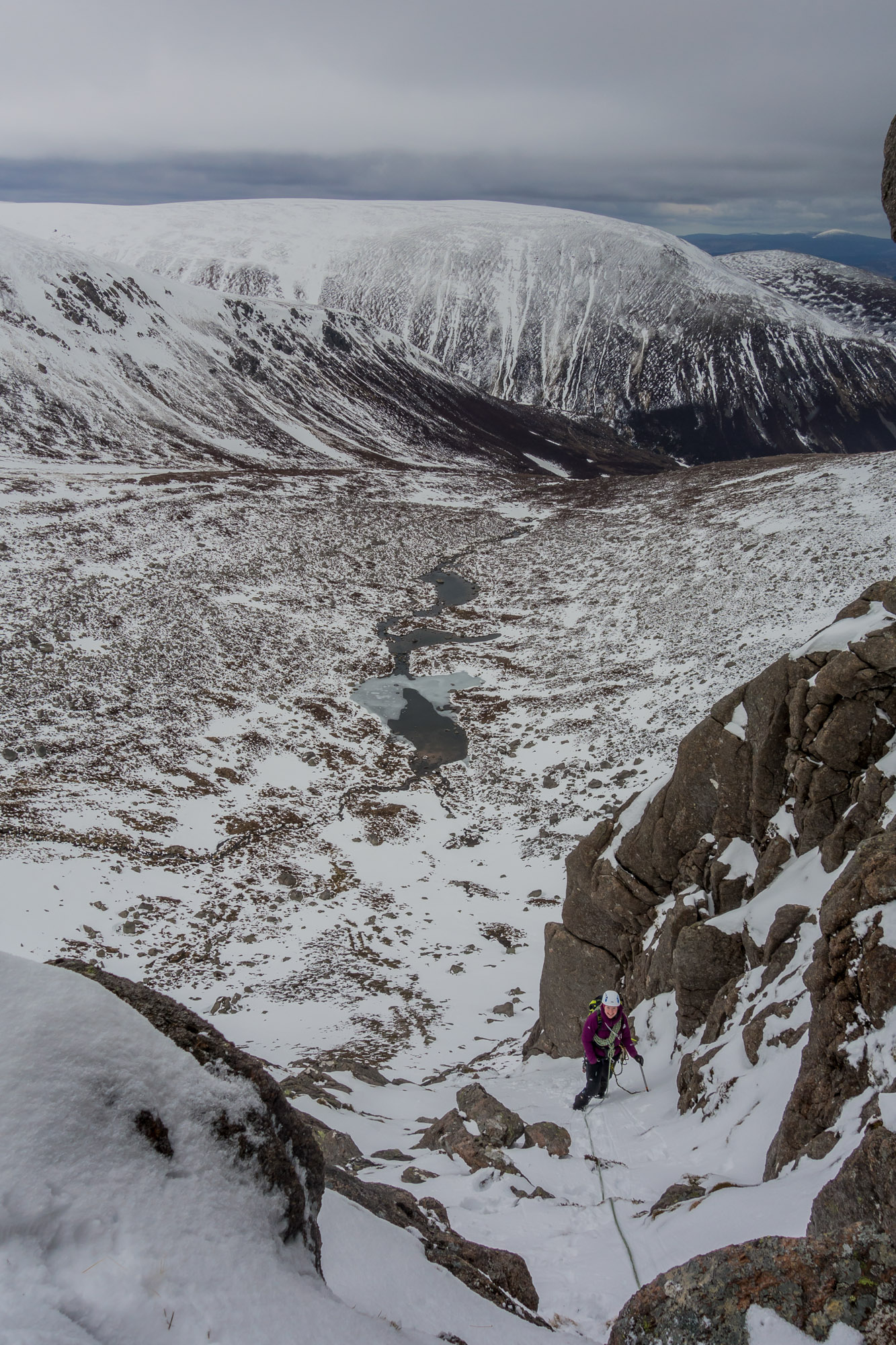
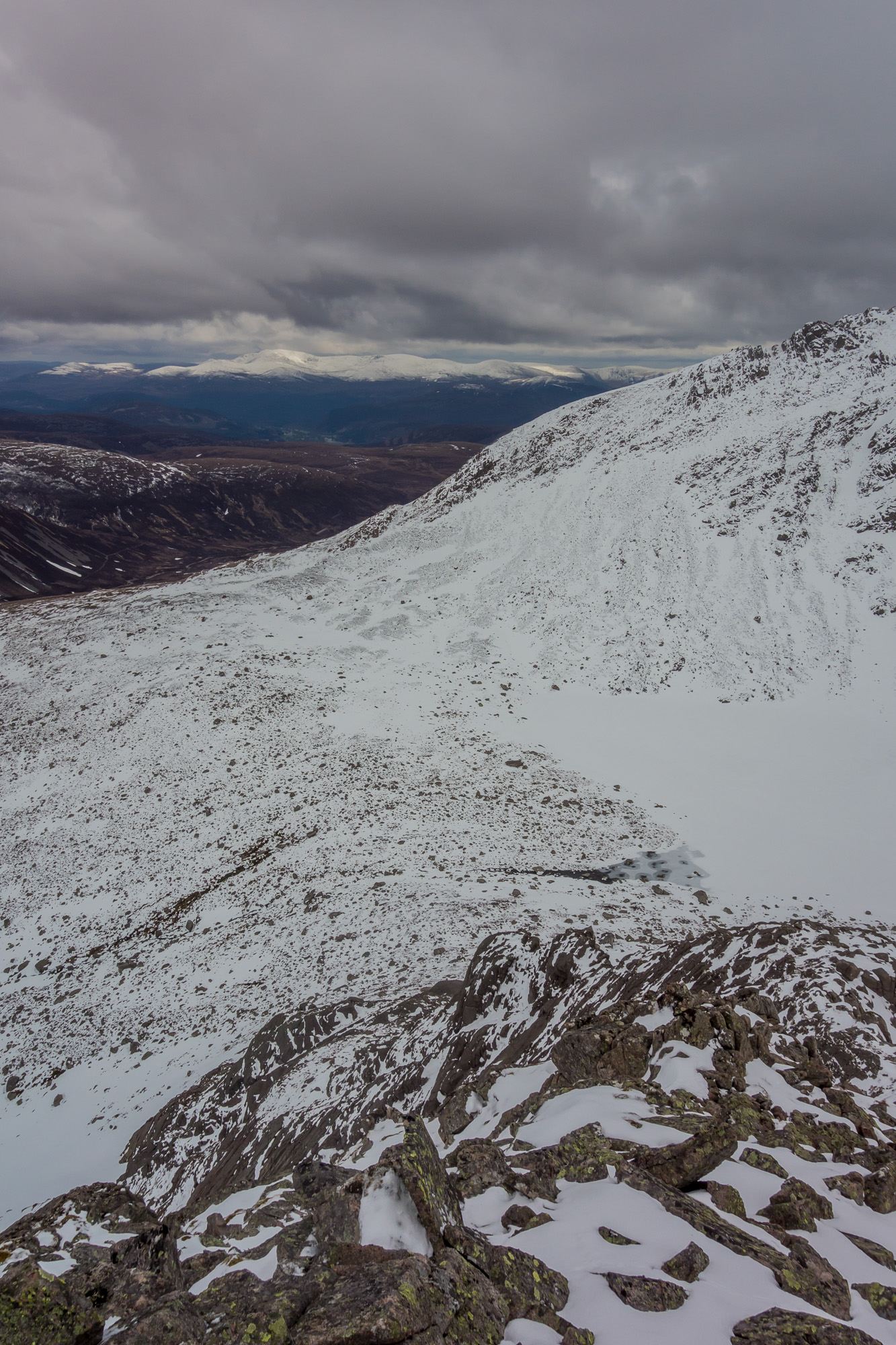
A very surreal scene greeted us – the clouds didn’t seem to be more than a few metres above us and the wind direction meant plumes of spindrift were being fired up from the cornices like a snow machine. This created a bizarre feeling of walking through a white room with one of the walls missing!
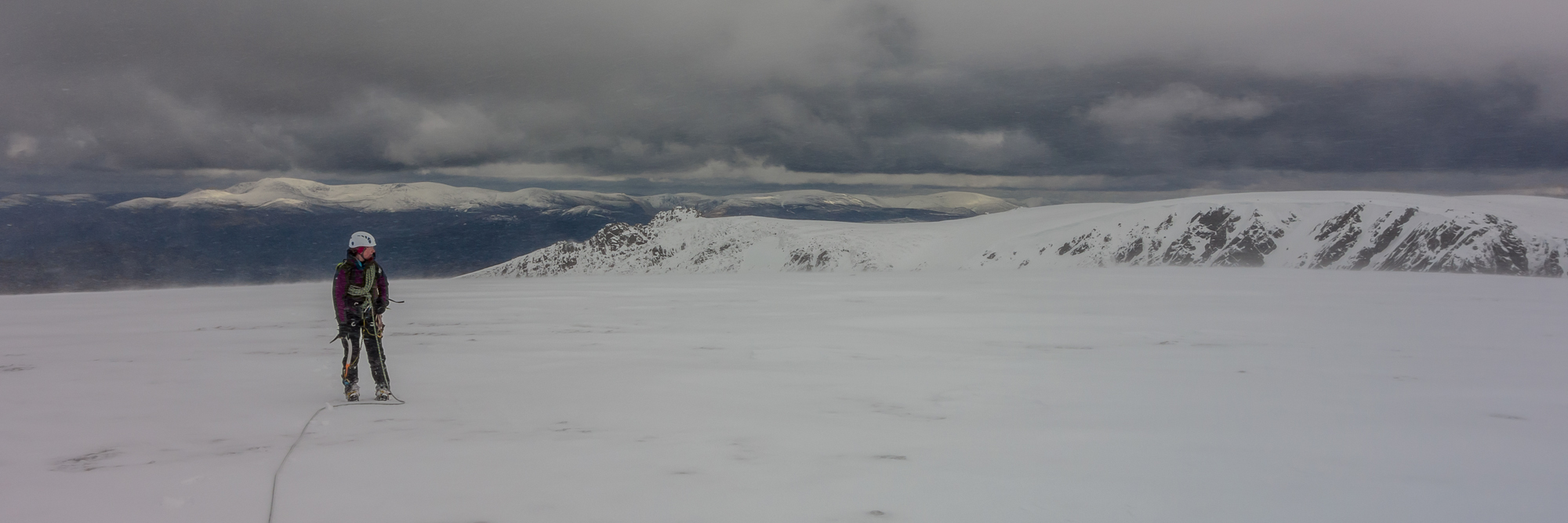
The missing wall was substituted for incredible views across the Cairngorms but conscious of the fact that if the clouds lowered any more the navigation would take on a more serious tone, we marched around the two lobes of Coire nan Clach and headed for North Top. Staying well away from the monster cornices we worked our way around until below Cnap a’Chleirich and from there descended deep snow back towards the Allt Dearg and on to the bikes.
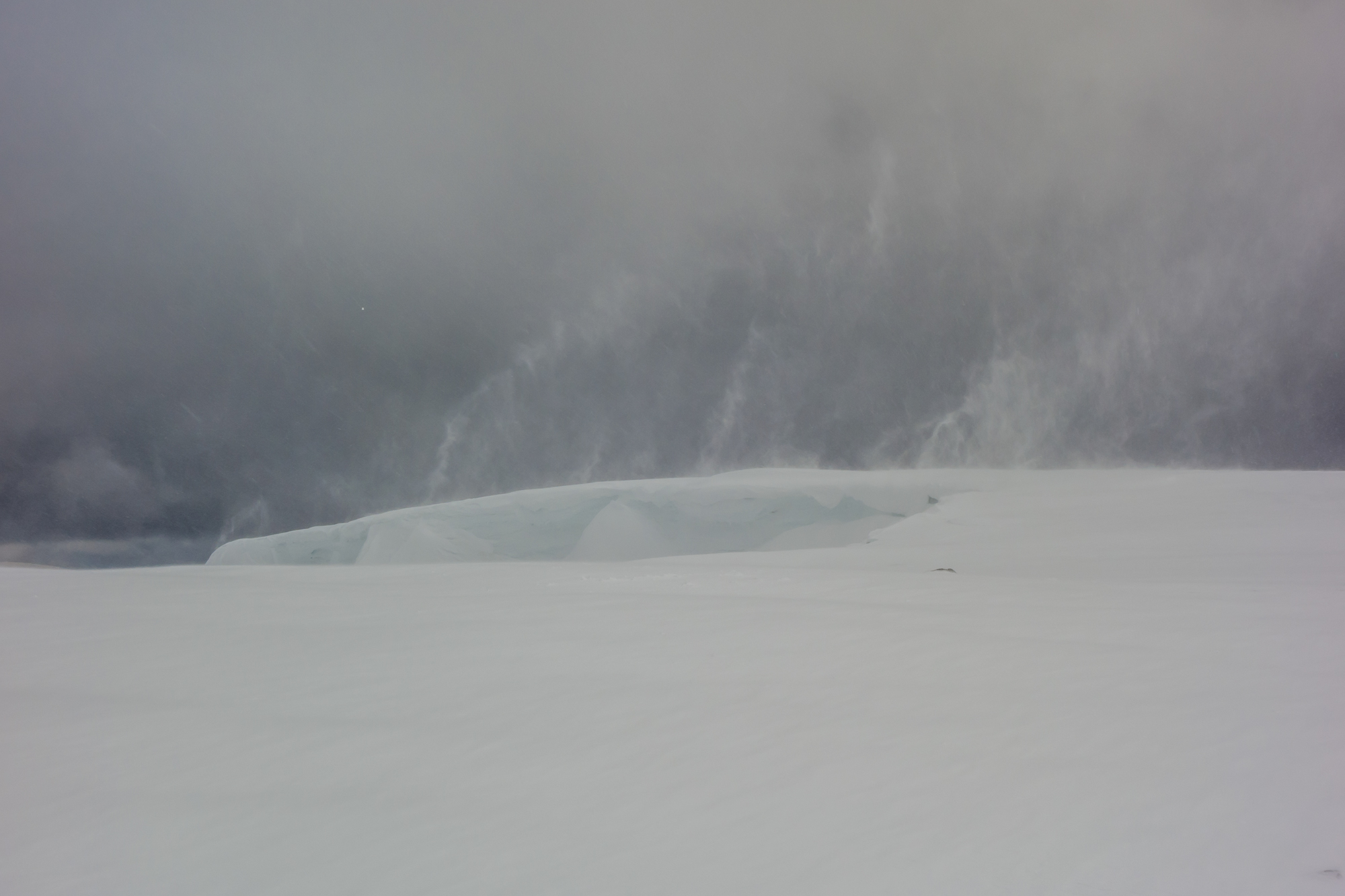
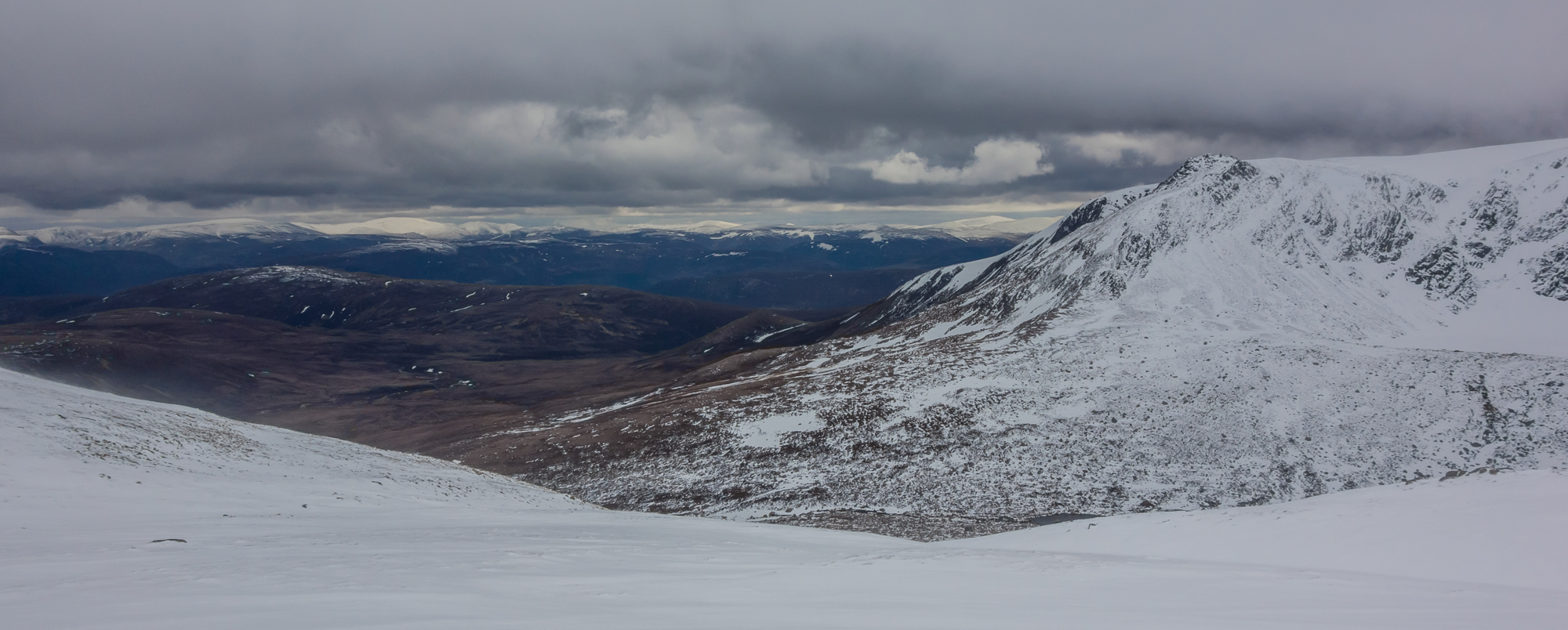
Feeling pretty battered but chuffed that the round trip from the bikes had only taken a few hours, we scoffed some strawberry laces and began the ride out. One of the best things about a big day on Beinn a’Bhuird is that no matter how tough the walking or climbing is, you know that once you get back on the bike the car is only an hour of downhill cruising away! I’m sure we’ll be back next year…
